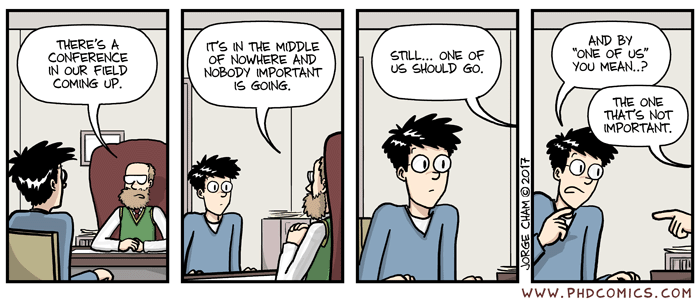Monthly Archives: June 2020
The Department of Pediatrics and Adolescents is 70 years!
 This year, it is 70 years since the children got their own clinic at Haukeland University Hospital, and yesterday this was highlighted at the hospital. The Department of Pediatrics was a liberation gift from Sweden after the war. When the building was inaugurated by Crown Princess Märta on May 31, 1950, it was the first and largest children’s clinic in the country. Bergen has the second largest children’s clinic in Norway. The Department accepts annually around 4,000 patients aged 0 to 18. The original building was demolished two years ago, and by 2023 the Glass Blocks will be finished. Meanwhile, the Pediatrics and Adolescents is located in Marie Joys’ House.
This year, it is 70 years since the children got their own clinic at Haukeland University Hospital, and yesterday this was highlighted at the hospital. The Department of Pediatrics was a liberation gift from Sweden after the war. When the building was inaugurated by Crown Princess Märta on May 31, 1950, it was the first and largest children’s clinic in the country. Bergen has the second largest children’s clinic in Norway. The Department accepts annually around 4,000 patients aged 0 to 18. The original building was demolished two years ago, and by 2023 the Glass Blocks will be finished. Meanwhile, the Pediatrics and Adolescents is located in Marie Joys’ House.
Did you know that the Department of Pediatrics and Adolescents has always been closely linked to the University of Bergen, in fact before any of these two institutions were built? Before the University of Bergen was established, it was important with special departments to “sell” the idea of a university. Pioneers like Dr. med. Carl August Looft and Consultant Physician Nils Backer-Grøndahl were driving forces for plans for both a children’s clinic and a medical faculty in Bergen. The gift from Sweden with the establishment of a children’s clinic after the war became an important piece in the final phase of the fight for a university in Bergen that was finally adopted by Stortinget in 1946.
The first leader of the Department of Pediatrics was Professor Alfred Sundal, who was a professorship candidate upon accession and thus already an important professional person for developing the university clinic at Haukeland.
In the 1960s, Norway’s first chromosome laboratory was established at the Department of Pediatrics by Consultant Physician Ole K. Harlem. Professor Dagfinn Aarskog, who in 1970 took over the management of the Department of Pediatrics after Sundal, – much after a research stay at Johns Hopkins University in the United States – got a great interest in genetics and then headed the chromosome laboratory for many years. He saw early the enormous potential in molecular genetics and became a key driver for the establishment of the Department of Medical Genetics and initiator of the establishment of the Center for Clinical Molecular Medicine.
The research laboratory at the Department of Pediatrics was further developed by Aarskog, Professor Lage Aksnes and later the diabetes group to become a powerful research environment with experimental and clinical research with clear clinical utility – modern translational research. An experimental laboratory physically inside a clinical ward was unusual and very innovative.
In addition, under the leadership of professors Robert Bjerknes and Britt Skadberg, powerful research environments in heart and lung research were established as well as the follow-up of extremely premature children. These groups have been very important to the environment in the university part of stage 1 of the new Children and Youth Center in the Glass Blocks.
The Department of Pediatrics have not only incubated premature children – but also pediatricians – to pursue an academic career. In addition to those mentioned, former and current professors Per Erik Waaler, Oddmund Søvik, Gjermund Fluge, Trond Markestad, Gottfried Greve, Kristian Sommerfelt, Ansgar Berg, Thomas Halvorsen, Helge Ræder and the undersigned have been central to research, teaching, and not at least research management at the Department of Clinical Science, the Faculty of Medicine, and the University of Bergen centrally.
What will be the next 70 years of challenges and opportunities? Larger student numbers, more individual, and more digitized teaching are likely to be central and are already underway. In research, large and real-world data sets, bioinformatics, and precision medicine are likely to be very important. User participation is expected to be part of the research, and the demand for relevance and benefit is probably increasing, while basic research will have an increased focus. And women! Of the 18 mentioned above, only one is female. Here, we have a job to do the next years!
As most people know, I am a pediatrician and have had the privilege of receiving my education at the Department of Pediatrics and Adolescents, and later experienced a stimulating environment for a university career up to the position of Professor and Head of the Center for Diabetes Research. I would like to thank you personally for this.
Finally, I would like to express my sincere thanks to the Department of Pediatrics and Adolescents´ leadership and the around 300 staff for being so positive about integrating the university’s core areas of research and teaching, innovation and communication with clinical practice. Access to clinical records and samples, and clinical questions, are crucial for our research. Education of health professionals is our main task. I am proud and delighted with the Department of Pediatrics and Adolescents, and believe that together we can make a difference – for our children – when it comes to translational and clinical research, and the education of top health and university staff.
Without the children´s clinic, no university – and without the university, no children’s university clinic.
Happy Birthday!
Open call for NCMM Associate Investigators
NCMM has entered its third 5-year period and we would like to expand the current network of NCMM Associate Investigators. A new call for both senior and more early-career Associate Investigators has now been opened: https://www.med.uio.no/ncmm/english/news-and-events/news/2020/open-call-for-ncmm-associate-investigators-.html
The application deadline is August 25.
For more information: AI call 2020
PhD defense – Lene Kristin Brekke
Lene Kristin Brekke will defend her PhD thesis on Thursday 11th June 2020
Trial lecture: Thursday 11th June 2020 at 10.15
Topic: «Fordeler og ulemper med ulike metoder for diagnostikk av kjempecellearteritt»
Place: https://tinyurl.com/LeneKristinBrekke
Public defense: Thursday 11th June 2020 at 12.15
Title of dissertation: «Giant Cell Arteritis in Western Norway 1972-2012. Incidence, Survival, Risk of Cancer and Causes of Death»
Place: https://tinyurl.com/LeneKristinBrekke
1st opponent: Professor II Carl Turesson, Lunds Universitet, Sverige
2nd opponent: Professor Anne-Sofie Furberg, UiT Norges arktiske universitet, Tromsø
3rd member of the committee: Professor Anne Kjersti Daltveit, Universitetet i Bergen
The defense will be led by professor Ola Myklebost
This week`s employee – Kristin Greve Isdahl Mohn
 I work as an associate professor at the Influenza Center, K2. In addition to teaching medicine and master students, we research colleagues and patients admitted to the hospital. We research the immune system and on immunological responses after both vaccination and infection with influenza viruses. We work with many different influenza viruses and have participated in various clinical trials with influenza vaccines on adults, children and health workers. The goal is to be able to contribute to knowledge in immunology in order to create better vaccines in the future. The long-term goal is a universal flu vaccine, a “one shot fix all.” But it’s probably even far ahead. My career at the influenza center started 10 years ago, during the swine flu pandemic in 2009. Then we collected samples from hospitalized patients in the infection ward to try to understand why some people get so much sicker than others. Now we’re researching the coronavirus, and that’s the second pandemic I’m allowed to be a part of. We are studying immunological responses in both staff and patients to see if we develop immunity to the new virus. Researching a viral pandemic is very exciting, demanding and unpredictable. Everything has to happen fast and it requires a lot of teamwork. Here at the Influenza Center we have a fantastic team. We have a widespread international cooperation, and it has provided many exciting discussions and new perspectives. Combining the position at K2 with clinical work as a doctor at the hospital is the perfect combination for me, and I love it.
I work as an associate professor at the Influenza Center, K2. In addition to teaching medicine and master students, we research colleagues and patients admitted to the hospital. We research the immune system and on immunological responses after both vaccination and infection with influenza viruses. We work with many different influenza viruses and have participated in various clinical trials with influenza vaccines on adults, children and health workers. The goal is to be able to contribute to knowledge in immunology in order to create better vaccines in the future. The long-term goal is a universal flu vaccine, a “one shot fix all.” But it’s probably even far ahead. My career at the influenza center started 10 years ago, during the swine flu pandemic in 2009. Then we collected samples from hospitalized patients in the infection ward to try to understand why some people get so much sicker than others. Now we’re researching the coronavirus, and that’s the second pandemic I’m allowed to be a part of. We are studying immunological responses in both staff and patients to see if we develop immunity to the new virus. Researching a viral pandemic is very exciting, demanding and unpredictable. Everything has to happen fast and it requires a lot of teamwork. Here at the Influenza Center we have a fantastic team. We have a widespread international cooperation, and it has provided many exciting discussions and new perspectives. Combining the position at K2 with clinical work as a doctor at the hospital is the perfect combination for me, and I love it.
New publications
Here are recent publications with contributions from K2 based on last week’s search on PubMed (and optionally articles that have not been included in previous lists). This time the list includes in total 4 recent publications. The entries appear in the order they were received from NCBI. If you have publications that are not included in this or previous lists, please send the references to Oda Barth Vedøy.
Deadlines
Dear all,
Please see below the updated links for external funding:
External funding opportunities
Funding opportunities for education
The webpages are updated every second week. New calls are marked as NEW.
Kind regards,
Amra, Ramune and Kaia


